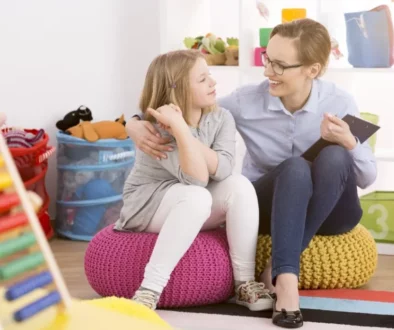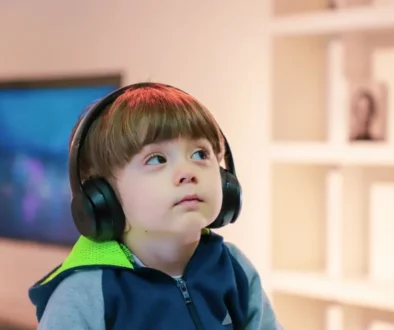The Benefits of Sensory Toys for Children With Autism
Did you know that for children with an autism diagnosis, early intervention can improve social skills, learning, communication, and underlying brain development? As a parent of a child with autism, it’s easy to feel like you don’t know where to start.
There are many treatment options for children with autism, but what do you do beyond that at home? One way you can help your child is with sensory toys.
Keep reading to learn about the benefits of sensory toys for children with autism.
What Are Sensory Issues?
Before diving into the benefits of sensory toys, it’s important to understand sensory issues in children with autism. Over 80 percent of children with autism have sensory issues that can impact one or more of their senses.
These senses can include:
- Sound
- Smell
- Sight
- Balance
- Touch
- Taste
- Body awareness
Sensory issues fall into one of two categories. Children with autism can experience one of these or a mixture.
First, you have children with hypersensitive sensory issues. These children are overly responsive to stimuli. Things like loud noises and touch can leave children who are hypersensitive overwhelmed.
The next category is children who experience hyposensitivity. For these children, their senses are actually dulled, and they’re not responsive enough to stimuli. For example, they might not be as sensitive to pain which can lead to injury.
What Are Sensory Toys?
Sensory toys for children with autism work by stimulating the five senses. The different types of sensory toys can incorporate different textures, bright and contrasting colors, or sounds.
The goal of sensory toys is to help your child develop their senses through play in an environment that’s safe and natural.
How Do Sensory Toys Help Children With Autism?
Children explore their world and learn through play. They also communicate and learn to problem-solve through play. There are many benefits to play, and sensory play comes with its own set of benefits.
Calm and Prevent Meltdowns
Children with autism, when overstimulated, can struggle with meltdowns. Meltdowns may look like tantrums, but they’re actually much different. They occur when someone becomes overwhelmed by the situation they’re in.
Sensory play can help calm and prevent meltdowns for children with autism. When your child regularly engages in sensory play, their brain starts to create new pathways.
The new pathways have the potential to create balance and help your child regulate. This can help prevent and decrease the number of times meltdowns occur.
In addition, a sensory toy or tool during a meltdown can help calm down your child during a meltdown. It does this by redirecting the child’s brain.
Improve Motor Skills
Around 87 percent of children with autism struggle with motor skills. This can range from fine to gross motor skills. Sensory play can help with motor skills.
For example, sensory bins often include toys of various sizes and textures, and because of that, playing in sensory bins can help with fine motor skills. Sensory toys can also help with gross motor skills as children run, walk, and more.
Improve Memory
How do you learn? Many people are visual learners, while others learn by hearing. There are various learning styles, but one thing stands true, often, you remember things better when you engage one or more of your senses.
For example, a scent is a powerful tool. Have you ever walked into a room and smelled something that triggered a memory? Our memories are tied to little things like that.
You can tie those senses to teaching your child the sounds different letters make or other things.
Develop Communication Skills
Children with autism can often struggle with communication and language. One way to help children learn how to communicate is through repetition.
Play offers a way to use repetition naturally. When playing with your child you’ll use repetitive gestures and words. During this time, your child can begin to understand what different words and gestures mean.
As they make sense of it, they can start to learn how to use language and develop their communication skills.
Types of Sensory Toys
There are many types of sensory toys you can use with your child. You can work with doctors and therapists to determine what types will benefit your child the most.
We’ll touch on a few common types of sensory toys.
Sensory Mats
Sensory mats are toys that use different textures. Kids can feel and play with the different textures using their hands and feet.
Chew Toys
There are chew toys for children with autism as well. Some children with sensory issues can chew on clothes or themselves to calm their anxiety.
This behavior can be harmful to them. However, you can redirect those behaviors with a chew necklace or other chew toy. It still allows your child to practice that self-soothing behavior but in a safe way.
Sand, Putty, or Slime
Some children struggle with their tactile senses. While slime, putty, or sand might not bother the majority of people, it can be unpleasant for other children.
Playing with these items can help improve a few things, including creativity, sensory perception, and fine motor skills.
Rainmaker Toys
Have you ever seen the long tubes that are bright colors and have beads that fall through various levels and create a rain sound? These are called rainmaker toys, and they’re fun for children and adults.
The bright colors and sounds from these toys can help calm some children. This is one toy that can help calm meltdowns in some children with autism.
Make Learning Fun With Sensory Toys
Sensory toys can help your child learn to interact with the world in new ways. These toys come with many benefits and are worth talking to your therapist about.
Are you concerned that your child may have autism? Contact Developmental Pediatrics of Texas and request an assessment today.



